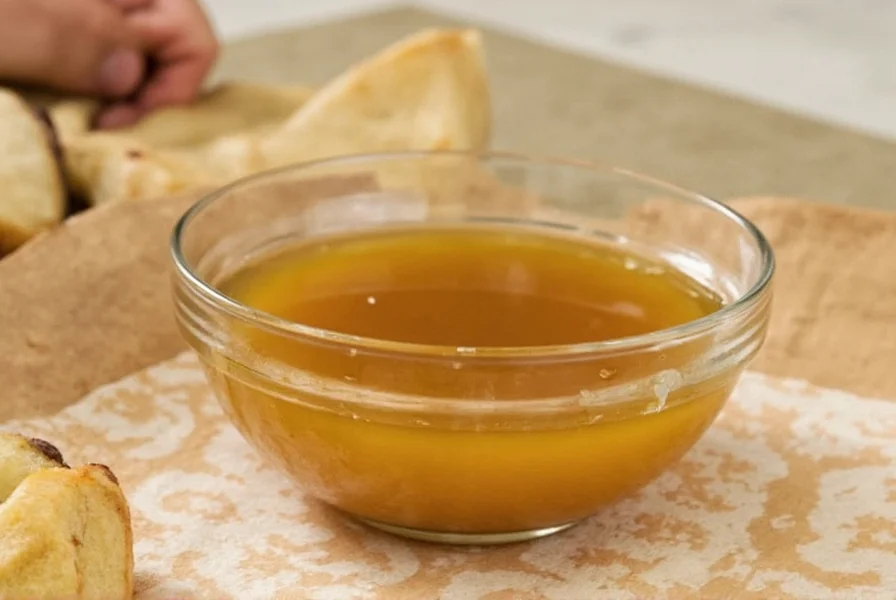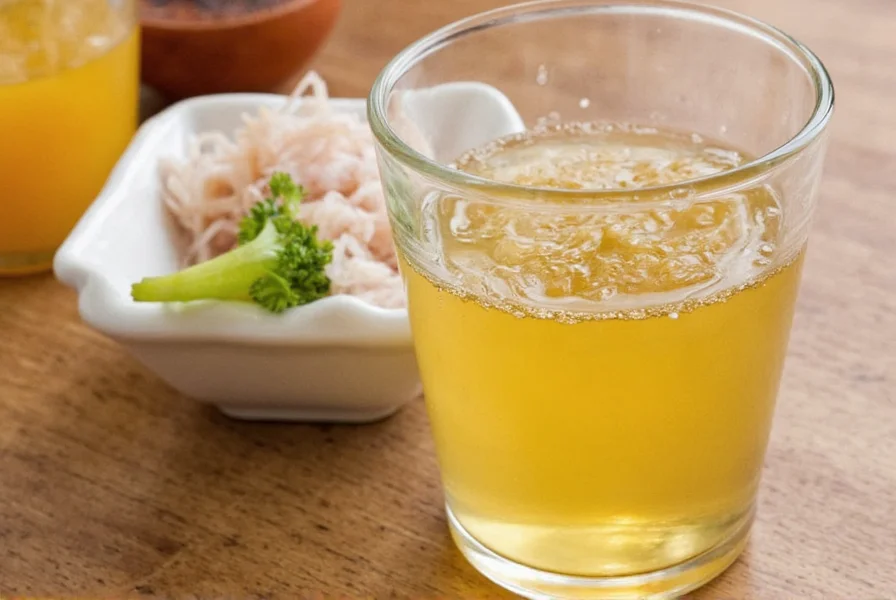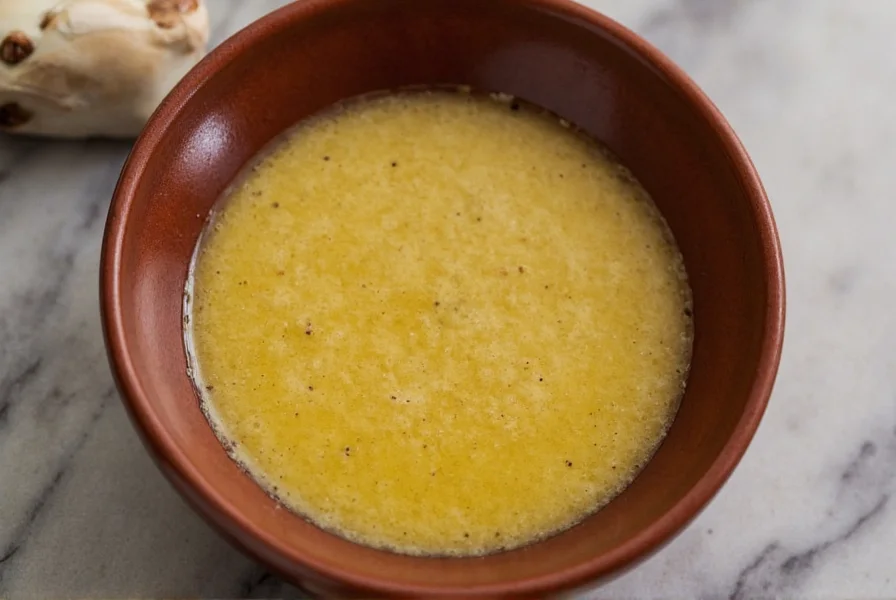Japanese ginger dressing, known as shoga vinaigrette in Japan, has become a staple in both traditional and fusion cuisine worldwide. Unlike Western creamy dressings, this light Asian-inspired sauce highlights fresh ingredients and subtle flavor balance. The dressing's popularity stems from its versatility—it complements delicate greens while standing up to heartier ingredients like grilled salmon or roasted vegetables.
Essential Ingredients and Their Roles
The magic of authentic Japanese ginger dressing comes from the careful balance of just a few key components. Each ingredient serves a specific purpose in creating the dressing's distinctive flavor profile:
| Ingredient | Traditional Amount | Function | Quality Tip |
|---|---|---|---|
| Fresh ginger | 2 tablespoons grated | Provides signature zing and warmth | Use young ginger for milder flavor |
| Rice vinegar | 3 tablespoons | Delivers gentle acidity | Unseasoned for authentic taste |
| Soy sauce/tamari | 2 tablespoons | Creates umami foundation | Use gluten-free tamari if needed |
| Sesame oil | 1 tablespoon | Adds nutty depth | Toast for richer flavor |
| Rice syrup/mirin | 1 tablespoon | Provides subtle sweetness | Mirin offers complex flavor |
Professional chefs emphasize that ingredient quality directly impacts the final product. For homemade japanese ginger dressing recipe success, use fresh ginger rather than powdered—this makes a significant difference in both aroma and flavor complexity. The ginger's enzymatic properties also help tenderize proteins when used as a marinade.
Step-by-Step Preparation Guide
Creating authentic japanese ginger dressing from scratch takes just 10 minutes with basic kitchen tools. Follow these steps for perfect results every time:
- Prepare the ginger: Peel and finely grate 2 tablespoons of fresh ginger using a microplane or traditional Japanese oroshigane (grater)
- Extract juice: Wrap grated ginger in cheesecloth and squeeze to extract 1 tablespoon of pure ginger juice
- Combine liquids: In a small bowl, whisk together ginger juice, 3 tablespoons rice vinegar, 2 tablespoons tamari, and 1 tablespoon mirin
- Add oils: Slowly drizzle in 1 tablespoon toasted sesame oil while whisking continuously
- Emulsify: Continue whisking until the dressing becomes slightly creamy and cohesive
- Rest: Let the dressing sit for 15 minutes to allow flavors to meld before serving

This traditional preparation method ensures optimal flavor extraction while maintaining the dressing's light consistency. Many commercial versions use ginger powder and artificial flavors, resulting in a less complex profile. The authentic japanese ginger dressing vs store-bought comparison reveals significant differences in freshness and ingredient quality.
Variations and Customizations
While the basic formula remains consistent, regional and personal preferences have created several popular variations:
- Kanto style: Slightly sweeter with additional mirin, common in Tokyo area restaurants
- Kyoto variation: Incorporates yuzu juice for citrus notes, reflecting the region's fruit traditions
- Vegan option: Substitute honey with maple syrup if avoiding honey
- Spicy version: Add 1/2 teaspoon of shichimi togarashi for heat
- Creamy adaptation: Blend with 1 tablespoon silken tofu for a richer texture without dairy
For those with dietary restrictions, gluten-free japanese ginger dressing is easily achieved by using tamari instead of soy sauce. The dressing naturally contains no dairy or nuts, making it suitable for many common dietary needs when prepared with care.
Serving Suggestions and Storage
Japanese ginger dressing shines when paired thoughtfully with complementary ingredients. While commonly used as japanese ginger dressing for salads, its applications extend far beyond:
- Salad pairings: Works beautifully with mixed greens, cucumber, wakame, and avocado
- Protein applications: Excellent marinade for grilled salmon, chicken, or tofu
- Veggie enhancement: Drizzle over roasted asparagus, green beans, or eggplant
- Rice accompaniment: Lightly dress sushi rice or grain bowls
When storing homemade dressing, use an airtight container in the refrigerator. Japanese ginger dressing storage tips include:
- Will keep for 5-7 days refrigerated
- Shake well before each use as separation is natural
- Do not freeze as texture will degrade
- Discard if aroma becomes sour or off-putting

Troubleshooting Common Issues
Even simple dressings can present challenges. Here's how to address common problems when making japanese ginger dressing:
- Too spicy: Balance with additional mirin or a pinch of sugar; the heat should be present but not overwhelming
- Too salty: Dilute with additional rice vinegar or a small amount of water
- Separation issues: Ensure proper emulsification by whisking vigorously or using a small blender
- Weak ginger flavor: Increase fresh ginger quantity or let the dressing rest longer before serving
- Overly sweet: Counter with additional rice vinegar, 1 teaspoon at a time
Remember that flavors continue to develop as the dressing sits. What seems perfectly balanced immediately after preparation may taste different after 30 minutes as the ginger's compounds interact with other ingredients.
Nutritional Profile and Benefits
Compared to creamy Western dressings, traditional japanese ginger dressing offers notable nutritional advantages. A two-tablespoon serving typically contains:
- Approximately 45-60 calories
- Zero cholesterol
- Rich in antioxidants from fresh ginger
- Contains gingerol, which may support digestion
- Lower sodium than many commercial dressings
The fresh ginger in authentic preparations provides potential health benefits including anti-inflammatory properties and digestive support. When prepared without added sugars, japanese ginger dressing nutritional benefits make it an excellent choice for health-conscious eaters.
Can I make japanese ginger dressing without rice vinegar?
Yes, you can substitute rice vinegar with apple cider vinegar or white wine vinegar in a 1:1 ratio. For closest results, add 1/4 teaspoon sugar to mimic rice vinegar's mild sweetness. Avoid distilled white vinegar as it's too harsh for this delicate dressing.
How long does homemade japanese ginger dressing last?
Properly stored in an airtight container in the refrigerator, homemade japanese ginger dressing will maintain best quality for 5-7 days. The fresh ginger juice begins to lose potency after this period. Always check for off odors or mold before using.
Why does my japanese ginger dressing separate?
Separation occurs because oil and vinegar naturally don't mix. To prevent this, ensure thorough emulsification by whisking vigorously while slowly adding the sesame oil. Using a small blender creates the most stable emulsion. Separation is normal and doesn't indicate spoilage—simply shake well before use.
Is japanese ginger dressing gluten-free?
Traditional japanese ginger dressing is naturally gluten-free when prepared with tamari instead of regular soy sauce. Always verify your soy sauce or tamari is certified gluten-free if you have celiac disease or severe sensitivity, as some brands may contain wheat.
Can I use ground ginger instead of fresh?
While fresh ginger is strongly recommended for authentic flavor, you can substitute 1/4 teaspoon ground ginger for 1 tablespoon fresh grated ginger in a pinch. The flavor profile will be noticeably different—less bright and complex—but still acceptable for emergency use. Never substitute powdered ginger for the full amount of fresh ginger.











 浙公网安备
33010002000092号
浙公网安备
33010002000092号 浙B2-20120091-4
浙B2-20120091-4